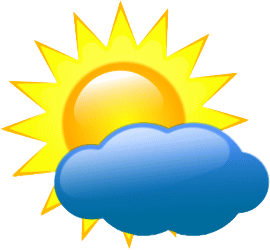:
|
Local time.
Time zone: GMT 0
winter time
* weather indicated in local timeTemperature trend on the chart
weather in nearby cities
 Marintoumania +32 °C
Marintoumania +32 °C  Koniakari +32 °C
Koniakari +32 °C  Marena +32 °C
Marena +32 °C  Sero +32 °C
Sero +32 °C  Sandare +32 °C
Sandare +32 °C  Kersignane +32 °C
Kersignane +32 °C  Tambakara +32 °C
Tambakara +32 °C  Tomora +30 °C
Tomora +30 °C  Oussoumbidiana +30 °C
Oussoumbidiana +30 °C  Diongaga +32 °C
Diongaga +32 °C  Kabate +31 °C
Kabate +31 °C  Fanga +32 °C
Fanga +32 °C  Yelimane +32 °C
Yelimane +32 °C  Guesséné +32 °C
Guesséné +32 °C  Koussane +31 °C
Koussane +31 °C  Goumera +31 °C
Goumera +31 °C  Kakoulou +30 °C
Kakoulou +30 °C  Hawa Dembaya +30 °C
Hawa Dembaya +30 °C  Medine +30 °C
Medine +30 °C  Goundara +30 °C
Goundara +30 °C  Diala +31 °C
Diala +31 °C  Kayes Ndi +30 °C
Kayes Ndi +30 °C  Kayes +30 °C
Kayes +30 °C  Diamou +30 °C
Diamou +30 °C  Sidibela +30 °C
Sidibela +30 °C  Bangassi-Nangou +30 °C
Bangassi-Nangou +30 °C  Sansankide +32 °C
Sansankide +32 °C  Lakamane +32 °C
Lakamane +32 °C  Kremiss +32 °C
Kremiss +32 °C  Same +30 °C
Same +30 °C  Bafoulabé +31 °C
Bafoulabé +31 °C  Samankidi +31 °C
Samankidi +31 °C  Mahina +31 °C
Mahina +31 °C  Djelebou +31 °C
Djelebou +31 °C  Aourou +31 °C
Aourou +31 °C  Diayecoura +32 °C
Diayecoura +32 °C  Dioura +32 °C
Dioura +32 °C  Kirane +32 °C
Kirane +32 °C  Gavimane +32 °C
Gavimane +32 °C  Aite +31 °C
Aite +31 °C  Sefe +31 °C
Sefe +31 °C  Youri +32 °C
Youri +32 °C  Ambidedi +31 °C
Ambidedi +31 °C  El 'Ayoun +30 °C
El 'Ayoun +30 °C  Niagane +32 °C
Niagane +32 °C  Bafarara +31 °C
Bafarara +31 °C  Gakoura +31 °C
Gakoura +31 °C  Walia +30 °C
Walia +30 °C 











